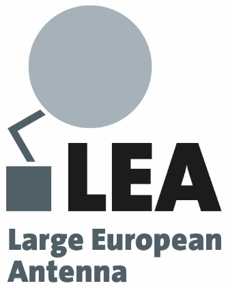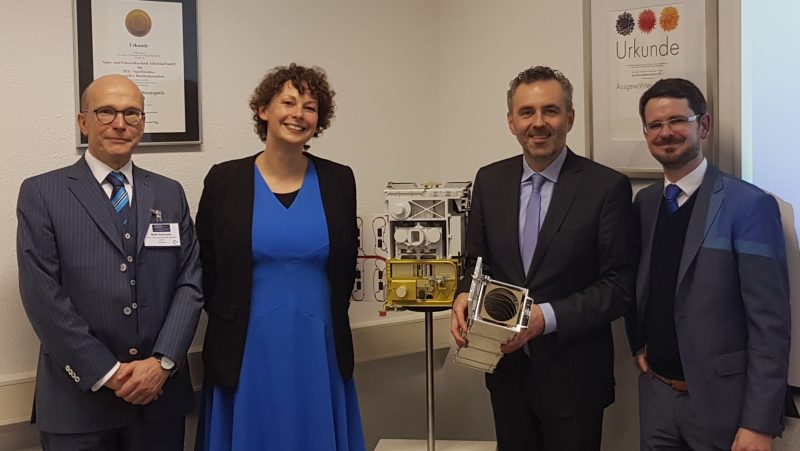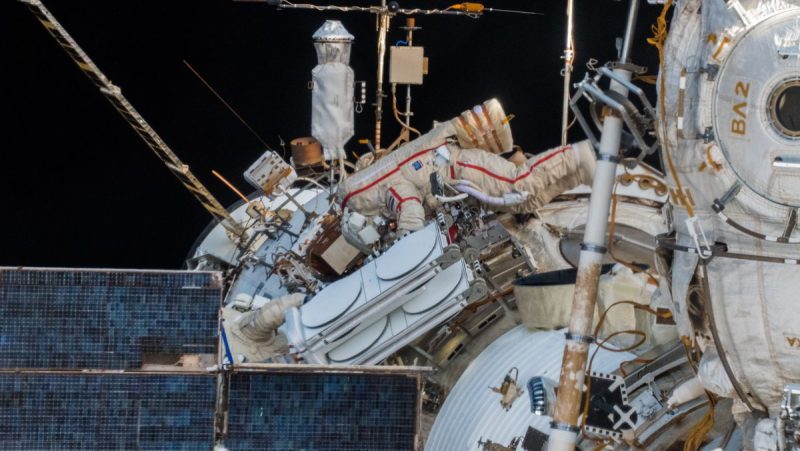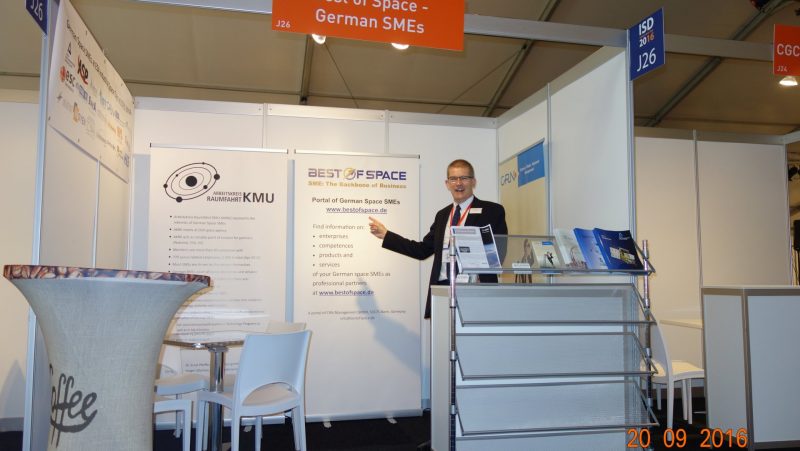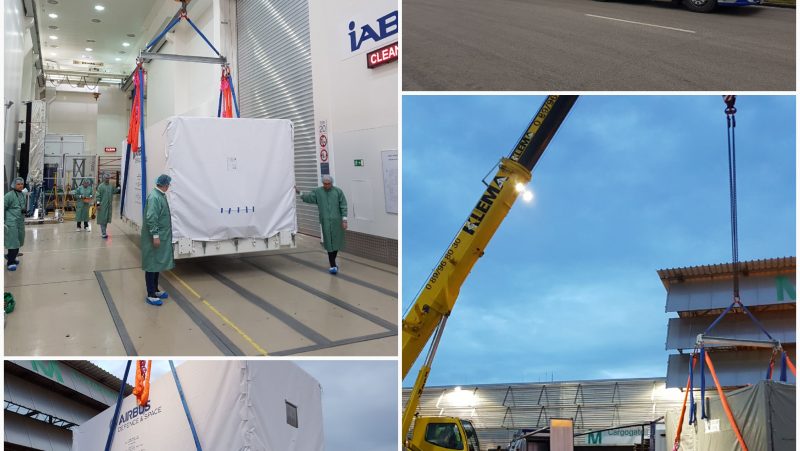Mittelständische Raumfahrt-Unternehmen, Wissenschafts- und Innovationspolitiker verlangen gemeinsam von Bundesregierung und Bayerischer Staatsregierung mehr Engagement für Zukunftstechnologien in der Raumfahrt. Anlässlich des 50. Jahrestags der ersten Menschen auf dem Mond fordern…
Autor: admin
STI provides 1800 deployment mechanisms for Airbus Oneweb Satellites
No longer just a dream: Internet for everyone everywhere – Airbus OneWeb Satellites (AOS) is aiming for global broadband internet. The AOS mega constellation will consist of 900 small satellites. AOS selected SpaceTech to develop and deliver the 1800 solar array deployment mechanisms. …
HPS announcing crucial milestone set for Europe´s own large deployable reflector subsystem (LDRS)
Large deployable antenna reflectors are among the critical space technologies most urgently needed in Europe in order to drastically reduce the continent´s dependence on goodwill, knowhow, and supplies from the United States. …
Innovation der Kleinsatelliten – Thomas Jarzombek besucht die Astro- und Feinwerktechnik Adlershof GmbH
Am Mittwoch, dem 14. November 2018, besuchte der Koordinator der Bundesregierung für die Luft- und Raumfahrt Thomas Jarzombek das mittelständische Unternehmen Astro- und Feinwerktechnik Adlershof GmbH, um sich über die Innovationskraft der Kleinsatelliten zu informieren und …
SpaceTech’s EM of MERLIN frequency reference unit ready
Immenstaad, 27 September 2018: The German-French satellite MERLIN (Methane Remote Sensing LIDAR Mission) is a mission to observe the concentration of the greenhouse gas methane. In this cooperation between CNES and DLR, CNES signs responsible for the satellite bus, which is a Myriade Evolution, and DLR signs responsible for the instrument. The instrument on MERLIN is a pulsed high power LIDAR (Light Detecting and Ranging) operating precisely at the methane absorption lines at 1645.55 nm wavelength. The instrument emits two different wavelengths called ‘online’ and ‘offline’: Online means located in the absorption feature and offline beside it for reference purposes.
To enable the required emission wavelengths around 1645.5-1645.7 nm, a frequency reference unit (FRU) is part of the instrument on the satellite. The frequency reference unit contains a methane gas cell, several diode lasers (1064 nm and 1645 nm emission wavelength), a wavemeter and the associated control electronics including an FPGA for stabilizing the diode laser emissions and the high power laser pulse frequency to the methane cell and the wavemeter. The FRU is delivering its optical signals to the high power laser and measures their wavelengths and the ones of the high power laser pulses to MHz accuracy. In addition it performs the wavelength stabilization control loops for the internal diode laser and of the OPO of the high power laser.
One and a half years after the start phase C/D, SpaceTech GmbH delivered the CDR data package for the frequency reference unit to Airbus and DLR. The co-location took place on the 25th and 26th of July 2018 at the SpaceTech premises in Immenstaad, Germany. All RIDs have been closed and no showstoppers for the CDR have been found. The engineering model has been built and its final testing phase has started.
After the successful operation of the LRI on GRACE-FO in orbit, the development of the frequency reference unit is the next major C/D development activity for a laser-optical instrument at SpaceTech.
Key and driving requirements of the FRU are:
- 5 mW of optical output power at 1645 nm with a laser frequency accuracy and stability of 10 MHz
- 10 mW of optical output power at 1064 nm with less than 1 MHz linewidth
- Measurement of every single transmitted pulse with a systematic error of less than 8 MHz
- Controlling the cavity of the optical parametric oscillator in the main laser
Links:
DLR Site in MERLIN (http://www.dlr.de/rd/desktopdefault.aspx/tabid-2440/3586_read-31672/)
Animated in orbit maneuvers of the MERLIN satellite: https://www.youtube.com/watch?v=tmlSAB-ltek
Scientific publication: http://www.mdpi.com/2072-4292/9/10/1052
Das diesem Bericht zugrundeliegende FE-Vorhaben wird im Auftrag des Bundesministeriums für Wirtschaft und Energie (BMWi) unter dem Förderkennzeichen 50EP1301 durchgeführt. Die Arbeiten sind Teil einer Kooperation zwischen DLR Raumfahrt-Management und CNES beim deutsch-französischen MERLIN-Satellitenprojekt. STI führt die Arbeiten im Unterauftrag der Firma Airbus DS GmbH, Ottobrunn durch. Die Verantwortung für den Inhalt dieser Veröffentlichung liegt beim Autor.
SpaceTech GmbH (STI)
Anspechpartner: Dr. Kolja Nicklaus
E-Mail: business@spacetech-i.com
Telefon: +49 (7545) 932 84 86
SpaceTech’s antenna for ICARUS enters commissioning phase
Immenstaad, 07 September 2018: The complex deployment work for ICARUS on ISS was conducted on August 15th. The Russian cosmonauts Oleg Artemyev and Sergey Prokopyev successfully installed the ICARUS antenna “demonstrator”- a large antenna assembly which consists of a transmit and multiple receive antennas. They were able to finish the deployment within 7 hours and 45 minutes. ICARUS will enter a 2-3 months commissioning phase after health of the equipment on the ISS is verified.
When asking the two brave Russian cosmonauts, they would certainly confirm the complexity of the mission that required long time special trainings in addition to novel high-tech deployment equipment and techniques.
The innovation-driven region around Lake of Constance provides big players and mid-size space enterprises great conditions for these kinds of missions with all facilities for upfront tests and trainings.
Funded by DLR, the MPI for Ornithology selected SpaceTech, an innovative small space system integrator in Immenstaad, for the challenging development. SpaceTech was responsible for the development and production of the entire space segment, consisting of inboard computer and outboard antenna assembly deployed on the ISS, as well as for the pre-development of the so-called tag – the tiny transmitter that rides on the bird’s or other animal’s back. SpaceTech subcontracted von Hoerner & Sulger, INRADIOS and STT-SystemTechnik as established German SMEs in space business for parts of the development and manufacturing.
The development activities of the demonstrator included as well, underwater training model, since water delivers conditions closest to working without gravity. On the other side of the lake, the ICARUS project crew found these underwater training conditions in the thermal bath and pool of Constance, where the model was tested in cooperation with the trainers of the cosmonauts before being shipped to the Gagarin Training Center in Moscow. The most challenging fact of this special deployment for the cosmonauts Oleg Artemyev and Sergey Prokopyev was the necessity of working with both hands in parallel, not able to hold on to anything. Engineering made it feasible with the solution of a strong bracket for their feet.
Another topic worth mentioning is the complexity of interaction of antennas up in space and the small tags moving on earth or in the air close to earth: SpaceTech’s high-tech system is able to pick up on the very weak signal that the tag is able to transmit due to its small size. This is a huge challenge, knowing that millions of other signals are sent everywhere all of the time. This ultra-sensitive hardware together with a unique software makes possible not only to hear the “soft” voices of the tags, but also to “understand” what they are saying.
Humankind may now ask, why we would need all that? Because it can “make the world a little better”. Using the evolved senses of animals to forecast disasters like earth quakes or volcano eruptions or global change are only two of the world-changing applications possible.
SpaceTech GmbH (STI)
Ansprechpartner: Dr. Kolja Nicklaus
E-Mail: business@spacetech-i.com
Telefon: +49 (7545) 932 84 86
Best of Space auf den Industry Space Days ISD2018 der ESA
CRN Management präsentiert das Portal der deutschen Raumfahrt KMU www.best-of-space.de auf den Industry Space Days 2018 der ESA in ESTEC, Noordwijk, NL vom 11. bis 12. September 2018.
Sie sind herzlich eingeladen uns am Stand K24 zu besuchen, genau gegenüber dem ESA-Village, um deutsche Experten der Raumfahrt-Unternehmen zu treffen.
Einige deutsche Raumfahrt-KMU stelle auf eigener Fläche aus, siehe Hallenplan.
CRN Management GmbH
Ansprechpartner: Jens Janke
E-Mail: jens.janke@crn-management.de
Telefon: +49 (228) 5344-9144
ASP-Equipment erweitert sein Headquater
ASP-Equipment GmbH, das in Deutschland größte unabhängige KMU für Raumfahrtprodukte, hat sich zu einem weiteren Schritt nachhaltigen Wachstums entschieden. Im Herbst 2017…
GRACE Follow-On satellites transported to Los Angeles – Ground Support Equipment by SpaceTech
On Friday 12 December 2017, the transport of the two GRACE-FO satellites and their launch adapter from IABG to Munich Airport was successfully completed. STI helped to transport…
ICARUS flight hardware ready for shipment to Russia
In June 2017 the ICARUS Flight Hardware was declared ready for hand-over to the ICARUS Project Cooperation Partners in Russia. After a series of …
- ‹ Previous
- 1
- 2
- 3
- 4
- Next ›





